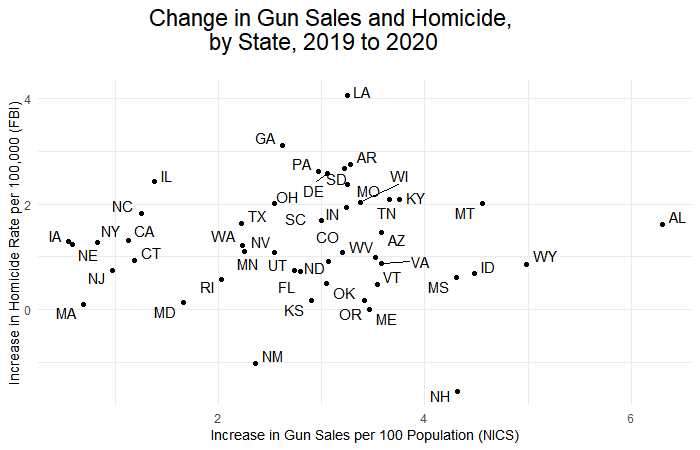Comment O’ The Day
If the environment is more favorable for criminal activity (no cash bail, cheering on property destruction, refusal to prosecute, defunding police, etc.), it should come as no surprise that there will be an increase in demand for guns, both from criminals who seek to exploit the favorable conditions for their endeavors and also from law-abiding citizens who seek to defend themselves from lawlessness.
Only any idiot would think this is a chicken/egg paradox
The Paradox of the 2020 Gun-Sales Spike
In a City Journal piece over the summer, I cast some doubt on the idea that 2020’s massive homicide spike — a 30 percent increase — had been driven by strong gun sales. America has so many guns that even a really strong year for sales doesn’t boost the supply that much, and most crime guns tend to be fairly old anyway.
Most interestingly, places with the biggest gun-sales spikes didn’t also have the biggest shooting spikes, according to a then-new study in Injury Prevention. I further noted, however, some NYPD numbers suggesting that while guns purchased less than a year ago accounted for 10 percent of crime-gun traces in 2019, they were 18 percent in 2020.
Now we have national data to update both the geographic and the gun-trace findings. Oddly enough, they both hold up. Comparing all of 2020 with all of 2019, the states with the biggest gun-sales spikes were not the same as the states with the biggest homicide spikes. But nationwide, new guns did show up quite a bit more in police departments’ gun traces.
Here’s a simple, per capita way of comparing changes in homicide rates with changes in gun sales (as measured via background checks for gun purchases, with a few states with quirky data excluded). There’s no obvious connection between the two, and the picture is the same when you plot the percentage change in one variable against the percentage change in the other.
 The new trace data, however, are less kind to the latest additions to America’s gun stock. In 2019, about 20 percent of traced guns had been purchased less than a year prior; in 2020, this rose to about 30 percent. (The Trace has some more ways of cutting these numbers here, as does my colleague Charles Fain Lehman here.) Continue reading “”
The new trace data, however, are less kind to the latest additions to America’s gun stock. In 2019, about 20 percent of traced guns had been purchased less than a year prior; in 2020, this rose to about 30 percent. (The Trace has some more ways of cutting these numbers here, as does my colleague Charles Fain Lehman here.) Continue reading “”

